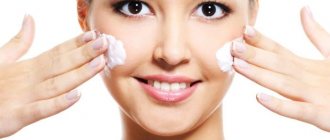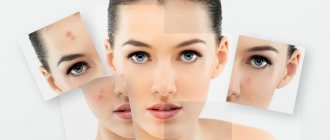What is the mechanism of drug action
The ointment has 3 main effects. It promotes tissue healing, affects metabolism and relieves inflammation. After contact with the wound area, the active substance interacts with the main proteins, for example, albumin. The active substance is involved in processes such as carbohydrate and lipid metabolism, the formation of hormones, mediators and porphyrins. "Dexpanthenol" has a regenerative effect not only on tissues, but also on mucous membranes. The drug also helps stabilize cellular metabolism and accelerate cell mitosis. Elimination is very fast.
Pantothenic acid, part of the B complex of vitamins (vitamin B5), was discovered in 1931 by RJ Williams (1893-1988) during the study of microbial growth factors. The name “pantothenic acid” was given to this substance by Williams and Saunders in 1933 [1]. In 1934, it was shown that pantothenic acid has a stimulating effect on the proliferation of yeast cells [2], which served as a prerequisite for the creation in 1944 of the first drug dexpanthenol for external use. In 1947, the biochemical function of pantothenic acid was elucidated when Lipann et al. showed that acetylation of sulfonamide requires a cofactor containing pantothenic acid [3].
Pantothenic acid itself does not have any specific effect when used in healthy animals or humans. However, it is a component of coenzyme A, which serves as a cofactor for enzymatically catalyzed reactions such as the transfer of acetyl groups, which are important for the synthesis and oxidation of fats, carbohydrate metabolism, gluconeogenesis, and the synthesis of steroid hormones and porphyrins. Coenzyme A is also involved in the process of protein modification, affecting their stability and activity. Particular importance in medicine is given to pantothenic acid as part of the biosynthesis of acetylcholine, leading to a decrease in acetylcholine levels and decreased peristalsis.
Dexpanthenol is a stable alcohol analogue of pantothenic acid. However, unlike it, it penetrates the skin well. When applied topically, dexpanthenol is easily absorbed into the skin and quickly turns into pantothenic acid, which is part of coenzyme A, which catalyzes the synthesis of fatty acids and sphingolipids that are part of the lipid composition of the stratum corneum of the epidermis. Thus, pantothenic acid is an important component necessary to maintain the physiological functions of the skin, in particular the barrier function. It has been established that dexpanthenol, when applied externally, acts as a moisturizing factor and also promotes wound healing, which is currently widely used in the pharmaceutical industry.
Dexpanthenol is highly soluble in water and alcohol, practically insoluble in fats and is the most stable form of pantothenic acid in liquids. These properties make it possible to use this substance in a concentration of 2 to 5% for external therapy of the skin and mucous membranes in the form of various dosage forms - ointments, creams, emulsions or solutions, as well as in the form of lozenges. In addition, dexpanthenol can be administered systemically to adult patients in a dose of 250 to 500 mg, which significantly expands the scope of its possible use. Thus, dexpanthenol is used for local adjuvant therapy for erosion and dystrophic lesions of the cornea and conjunctiva; for inflammatory diseases, violation of the integrity of the mucous membrane of the oral cavity, nose, larynx, respiratory tract, including in the postoperative period; for systemic therapy of intestinal paresis in the postoperative period; to accelerate epithelization in case of skin injuries, as well as in case of irritation, inflammation of the skin (for example, sunburn); for the prevention and treatment of scratches and cracks in the skin, with its xerosis; for caring for the mammary glands during lactation (prevention and treatment of cracked nipples); for the prevention and treatment of diaper rash in children and adults; in the treatment of chronic ulcers, bedsores, as well as skin transplantation; for topical treatment of erosion of the cervix and gastric mucosa.
As stated above, pantothenic acid is essential for the normal functioning of the epidermis. The most studied aspects of the topical activity of dexpanthenol, which, according to the results of numerous laboratory and clinical studies, acts as a moisturizer, maintaining the softness and elasticity of the skin. Thus, as a result of a randomized, double-blind, placebo-controlled study of the effect of dexpanthenol on the state of the epidermal barrier in vivo, it was demonstrated that the use of topical forms containing this substance for 7 days improved the hydration of the stratum corneum and reduced transepidermal water loss [4].
The ability of dexpanthenol to moisturize the skin is associated with its hygroscopic properties and ability to retain moisture [5]. The hydrating effect of dexpanthenol is associated with its ability to restore the epidermal barrier. In an experimental study conducted on porcine skin biopsies, it was found that dexpanthenol increases the molecular mobility of several lipid and protein segments of the stratum corneum, thereby helping to moisturize even severely dehydrated skin. It has been shown that dexpanthenol interacts with lipid segments of extracellular plates and protein residues in corneocytes of the stratum corneum and, thus, compensates for dehydration of the epidermis by maintaining/increasing molecular fluidity [6].
The moisturizing properties of dexpanthenol have determined its place in various cosmetic products, such as after-sun care and children's skin care products. However, this substance also has anti-inflammatory properties. It has been shown that cosmetics containing dexpanthenol are significantly superior to placebo in terms of the anti-inflammatory effect on experimental UV-induced erythema [7].
The wound-healing effect of dexpanthenol has been known since the discovery of this substance, but the mechanism of wound healing was discovered relatively recently. The beneficial effect of dexpanthenol on wound healing is the result of increased fibroblast proliferation and accelerated epithelialization [8], which is observed in the treatment of both deep and superficial injuries.
Dermal fibroblasts are known to play a key role in the healing of skin wounds. When dexpanthenol acts on human fibroblasts, their proliferation, cell migration to the site of inflammation, fixation of fibroblasts in the wound, and increased collagen synthesis are noted [9]. This occurs due to the regulatory effect of dexpanthenol on fibroblasts at the genetic level. As a result of gene expression analysis in human dermal fibroblasts cultured in the presence of pantothenate at a concentration of 20 mg/ml and in untreated cells, an increase in the production of IL-6, IL-8, Id1, HMOX-1, as well as an increase in the expression of HspB7 and CYP1B1 was found [ 10]. In a randomized, double-blind study of samples obtained by puncture biopsy from areas of previously damaged skin treated with dexpanthenol, and biopsies from placebo-treated skin, increased expression of the genes IL-6, IL-1b, CYP1B1, CXCL1, CCL18 and KAP 4−2 was found [11], which confirms the correlation between the results of in vitro and in vivo studies. It is noted that wound healing in the presence of dexpanthenol occurs due to dexpanthenol-induced regulation of mRNA gene expression.
The therapeutic effect of dexpanthenol on the skin is also facilitated by its pharmacological properties. Thus, unlike pantothenic acid, dexpanthenol penetrates well into the skin, where it is quickly converted into pantothenic acid, as demonstrated in studies conducted both in animal experiments and in vivo with the participation of healthy volunteers. It was noted that the absorption of dexpanthenol depends on the drug base. It decreased if olive oil was used as the base of the topical product. However, both the rate and extent of penetration of dexpathenol were higher when used in the form of a water-in-oil emulsion than in the form of an oil-in-water emulsion [12].
Dexpanthenol is a non-toxic substance. However, the literature reports isolated cases of local allergic reactions or skin irritation due to the use of dexpanthenol [13, 14]. It should be noted that most unwanted side effects were noted when this drug was administered orally, but not when used externally. In general, the experience of fairly widespread use of dexpanthenol in clinical practice indicates a very rare development of undesirable side effects.
Thus, more than 70 years of experience in the use of dexpanthenol in medicine has shown that this substance helps improve the barrier properties of the skin, and also has anti-inflammatory and wound-healing properties, which allows it to be widely used in dermatological practice as an independent remedy for the treatment of various skin diseases , and as part of complex therapy.
An example of the complex use of dexpanthenol in the external therapy of dermatoses is Tetraderm
, recommended for the treatment of acute and chronic inflammatory dermatoses with concomitant bacterial and mycotic infection or with a high probability of secondary infection. It contains mometasone, gentamicin, econazole and dexpanthenol. The drug is recommended to be applied to the skin of adult patients 1-2 times a day until a positive clinical result is achieved, but not more than 4 weeks.
Own experience of using Tetraderm
is based on the observation of 22 patients of both sexes aged from 24 to 67 years who sought medical help at a family medical clinic.
9 of the applicants were diagnosed with allergic dermatitis, complicated by a secondary infection, 5 - chronic eczema, complicated by a secondary infection, 3 - lichen planus with localized rashes in the genital area, 3 - palmoplantar form of psoriasis with abundant pustules, 2 - atopic dermatitis in the acute stage with abundant excoriation, complicated by secondary infection. Tetraderm
2 times a day as a topical drug The average duration of therapy was 11±2 days.
Choosing Tetraderm
was dictated by the presence in 14 patients of clinical signs of secondary bacterial and fungal infections.
However, taking into account the acute pathological process on the skin in all patients, as well as the independent use of antibacterial agents in 5 of them, laboratory identification of the causative agents of secondary infection was not possible or advisable. In 8 patients, untreated mycosis of the feet and nails was previously diagnosed. In cases of genital localization of rashes in patients with lichen planus, as well as in patients with palmoplantar psoriasis, the basis for prescribing Tetraderm
was a high risk of secondary skin infection.
In addition, pronounced maceration of the skin and mucous membranes of the anogenital area in patients determined the need for the use of a wound healing agent and the subsequent restoration of barrier function. Thus, the use of Tetraderm
, containing dexpanthenol, seemed appropriate.
All patients under observation used Tetraderm
according to the received prescriptions until the rash is completely resolved.
None of them experienced the development of undesirable side reactions. In addition, when surveying patients, it was found that they all highly appreciated the organoleptic and therapeutic properties of Tetraderm
, as well as the ease of use (one drug instead of several), 13 patients would prefer to use the drug in the event of a repeated exacerbation of the disease, 10 patients noted rapid healing of skin damage and elimination of unpleasant subjective sensations associated with skin rashes.
Thus, according to published data, dexpanthenol is an effective and safe treatment for various diseases and conditions of the skin accompanied by damage to its integrity. Dexpanthenol accelerates wound healing, has an anti-inflammatory effect and improves the barrier properties of the skin, preventing excess moisture loss. Tetraderm cream
enhances the anti-inflammatory effect of this drug, and also promotes faster wound healing and skin restoration, which allows us to recommend
Tetraderm
as an effective and safe treatment for dermatoses accompanied by skin maceration, secondary infection or a high risk of infection.
The author declares no conflict of interest.
The author declares no conflict of interest.
Information about authors
Dvoryankova E.V. — https://orcid.org/0000-0002-2458-419X
Corresponding author:
Dvoryankova E.V. — email
When to use
"Dexpanthenol" is most often used to accelerate healing for minor microtraumas. Can be used on mucous membranes in the presence of erosions. The drug helps fight dry and cracked skin and is indicated for burns and minor abrasions. Sometimes the ointment is prescribed to patients with bullous dermatitis, suppuration and trophic ulcers. It is allowed to be used for the treatment and prevention of bedsores in bedridden patients. The ointment is applied to aseptic wounds for transplantations that do not take root well after operations, but constant monitoring by the attending physician is required.
Dexpanthenol
Tissue regeneration stimulator dexpanthenol is a derivative of pantothenic acid, known as vitamin B5. The drug is available in the form of an ointment for external use and is used in the treatment of skin injuries of various origins: wounds, burns, abscesses, dermatitis, etc. It is used in the care of newborns and infants, in the treatment and prevention of inflammation of the nipples during breastfeeding. The drug takes an active part in the processes of oxidation and acetylation, plays an important role in the metabolism of carbohydrates and fats, and participates in the synthesis of corticosteroids, acetylcholine, and porphyrins. Has an accentuated effect on the formation of epithelial tissue. Endowed with moderate anti-inflammatory activity. Dexpanthenol is an almost ideal drug for caring for the mammary gland during lactation. Clinical studies have shown that a seven-day course of treatment with dexpanthenol is enough to reduce pain in the nipples by 35 (!) times, and the effectiveness of pharmacotherapy using this drug is close to 100%. When using dexpanthenol ointment by nursing mothers, a thin layer of it was applied to the surface of the nipple and adjacent skin at the end of each act of feeding. Pediatrics is another wide area of application of this drug. We are talking here, first of all, about the heat rash of newborns, which appears due to clogging of the sweat glands with sebum. The traditional localization of miliaria is the face and upper torso. It looks like rashes with cheesy or watery contents. This disease is successfully treated with dexpanthenol, regularly applied to the affected areas of the skin. The drug quite easily copes with chapping of the skin, which occurs due to exposure of the baby’s skin to adverse weather factors (low temperatures, strong wind, etc.) and manifests itself in the form of redness and dryness of the unprotected skin of the face and hands. A very common problem for young mothers is diaper dermatitis in their babies, which is an acute irritation of the skin in areas of contact with diapers or diapers.
Most often, diaper dermatitis develops in girls, and in general its prevalence in newborns and infants reaches 50%. In children who are breastfed, diaper dermatitis is less common, because their feces have low enzymatic activity. To avoid the occurrence of this disease, it is recommended to use various protective agents at each diaper change, a striking example of which is dexpanthenol. The vitamin component of the drug accelerates the healing of dermatological microtraumas, while providing (which is a kind of “trick” of vitamin B5, since it is not an antibiotic) a bactericidal effect. Clinically significant negative side effects with the use of dexpanthenol have not yet been recorded in medical practice. One of the studies on the effectiveness of the use of dexpanthenol in children suffering from atopic dermatitis was conducted at the allergy department of the Federal State Budgetary Institution Research Institute of Nutrition of the Russian Academy of Medical Sciences. As a result of the use of dexpanthenol, a significant improvement in the condition of the skin of children was noted: hyperemia decreased, dry skin decreased, and skin itching disappeared. Elimination of signs of atopic dermatitis was observed in 84% of cases. Thus, the use of this drug contributed to the achievement of an accentuated clinical effect, which made it possible to provide proper skin care and control the course of the disease, protect the skin from adverse environmental factors and improve the child’s quality of life.
The dosage regimen for dexpanthenol is as follows: the ointment is applied to the affected areas of the skin once a day; in the area of the nipple and areola it is applied in the form of a compress. When treating lesions of the uterine mucosa, the ointment can be applied several times a day.
How to use for pregnant women and children
Use in children is no different from adults.
The ointment is approved for use by pregnant and lactating women. For treatment in the breast area around the areola in women during breastfeeding, Dexpanthenol is recommended in the form of compresses. Before starting feeding, it is necessary to remove the remaining ointment with running water, without using soap, which can dry out the treated area.
"Dexpanthenol" is also necessary for restoring the skin from diaper rash in newborns.
Cream "Dexpan Plus" for dry skin care
Peeling, irritation and redness are not all that a person may experience with dry skin.
Much more unpleasant are itching, scratching and cracks - manifestations of xeroderma (the scientific name for dry skin), which increase the risk of contracting a bacterial or fungal infection. In addition, dry skin ages quickly and reacts sharply to sunlight, wind and low air temperatures.
Products used to care for dry skin should help soften, restore and moisturize the skin, protect, and in case of cracks, help restore the barrier function of the skin. To care for your skin during the day, it is preferable to use water-based creams that are quickly absorbed and leave no residue. It is better to apply fatty creams and ointments in a thick layer before bedtime.
Products containing lactic, malic, salicylic acid, resorcinol, urea or allantoin have keratolytic (exfoliating) properties. They soften and painlessly remove dead scales from the skin. In addition, allantoin, a natural compound found in the roots of the plant Symphytum officicale (Comfrey), has a softening and moisturizing effect, stimulates the regeneration and renewal of epidermal cells, eliminates flaking of the skin, making it smooth and elastic.
Moisturizing components create a hydrophobic film on the surface of the skin that prevents moisture evaporation. These include vegetable and animal fats, which also contain vitamins. The most popular components of moisturizing creams are olive, sunflower, flaxseed, sea buckthorn oil, jojoba, argan and avocado oils, and Shea butter.
Humidification creates the necessary conditions for nutrition and regeneration: cells saturated with water, unlike dry and damaged ones, are able to normally perform their functions, including carrying nutrients, oxygen and building new elements. Special nourishing creams contain complexes of vitamins A, B, C, PP, E and others. In addition, for example, provitamin B5 (panthenol) promotes the healing of small wounds, maintains water balance and skin resistance to external environmental influences, and stimulates skin regeneration.
It is not always possible to find a skin care product that contains the full range of properties important for dry and damaged skin.
Cream "Dexpan Plus" - contains a combination of dexpanthenol, allantoin, as well as emollients including shea butter (shea butter), designed to care for dry and damaged skin from the first days of life.
The cream contains components that restore, soften and moisturize the skin. It does not contain aromatic substances or dyes and is hypoallergenic. The cream is quickly absorbed, suitable for delicate areas with sensitive thin skin, does not leave greasy stains, has no odor, which indicates good organoleptic properties and its high compliance.
Cream "Dexpan plus" from Dr. Reddy's was developed by dermatologists specifically for dry and dehydrated skin.
Thanks to the combination with Dexpanthenol, Allantoin and Shea butter, the cream helps restore the skin's protective barrier, softening and moisturizing, eliminating the feeling of dryness and tightness.
Dexnanthenol enhances the skin's ability to retain moisture and soothes particularly dry areas of the skin, Allantoin activates microcirculation of moisture in skin cells. Shea butter has a softening and moisturizing effect, which makes it indispensable for caring for dry and irritated skin.
It should be noted that the cream is well absorbed and does not leave a greasy film on the skin. The formula with panthenol strengthens the skin's protective barrier, preventing moisture loss and soothing irritated areas of the skin.
Prepared based on
1. Sirmais N.S., Tsykin A.A., Kuznetsova Yu.K. Skin xerosis. Solving the problem with external means. RMJ. 2015;9:496
2. Belousova T.A., Kail-Goryachkina M.V. A personalized approach to the selection of basic therapy for dry skin. Con med. 2017;(2):38-42
3. Leaflet cream “Dexpan plus”
Related product: [product](DEXPAN PLUS CREAM 30.0)
As an advertisement
Dexpanthenol: what is it used for?
Mechanism of action of dexpanthenol
With the participation of pantothenic acid, oxidative processes and acetylation occur in the body. Vitamin B5 is necessary for normal cellular, lipid and carbohydrate metabolism. Thanks to the compound, the following are synthesized: acetylcholine, porphyrins, cholesterol, corticosteroids. Pantothenic acid is involved in the renewal of the epidermis, increases the strength of collagen fibers - the protein responsible for skin elasticity.
Dexpanthenol stimulates regeneration processes in tissues, increasing the speed of fibroblast movement to the wound surface. As part of meso-cocktails, it has an antioxidant and moisturizing effect. Once in the tissue, it is quickly absorbed and combines with plasma proteins. Dexpanthenol has pronounced anti-inflammatory properties.
What aesthetic problems does it solve?
In medicine, dexpanthenol is used as a wound healing agent. Indications for its use in cosmetology are:
- acne (acne);
- dermatoses of various origins;
- baldness (in combination with biotin);
- increased skin greasiness;
- hair thinning;
- signs of photoaging;
- seborrheic dermatitis.
Mesotherapy procedures with dexpanthenol are recommended at the rehabilitation stage after dermabrasion and peeling.
Methods of using dexpanthenol
Dexpanthenol (panthenol) is a popular ingredient in moisturizing serums, emulsions, and gels. And all because it is able to attract water molecules, holding them like a sponge. Having a low molecular weight, it easily penetrates into the deep layers of the skin. A distinctive feature of skincare cosmetics with dexpanthenol is its light texture. The fact is that pantothenic acid does not dissolve in oils, but mixes well with water.
Cosmetics manufacturers often include dexpanthenol in hair care products: conditioners, masks, shampoos. This substance has a complex effect. On the one hand, it envelops each hair with the thinnest protective film. On the other hand, dexpanthenol penetrates deep into the rod, filling the voids. As a result, after using such cosmetics, the hair becomes shiny and smooth, less susceptible to the negative effects of ultraviolet radiation and hard salts.
Physiotherapy and mesotherapy procedures with dexpanthenol provide excellent results. During ultrasound and microcurrent therapy, pantothenic acid concentrate can be applied under contact gels. The drug is used for iontophoresis. In cocktails and in its pure form, dexpanthenol is used in instrumental (fractional) mesotherapy. In injection techniques, it is introduced into multicomponent formulations for the complex treatment of acne or alopecia. The techniques used are papules and nappage.
Dexpanthenol is suitable for microneedling procedures. It can be applied under a mesoscooter as a stand-alone preparation or in combination with hyaluronic acid, Asian centella, and organic silicon. 20% dexpanthenol is consumed at the rate of 1–2 ml on the face (scalp) and 6 ml on the body.
Instructions for using the drug under a mesoscooter:
- Remove the device from the case and disinfect its working surface – the needle drum.
- Remove makeup from the face, wipe the skin with chlorhexidine or alcohol-containing lotion.
- Draw dexpanthenol solution into a clean syringe. Apply it dropwise onto the surface of the forehead.
- Treat this area with a mesoscooter: roll the drum 5–10 times in the vertical and horizontal directions, diagonally.
- Perform the same actions one by one on the cheeks, in the eye area, on the temples, in the area of the nose, chin, and above the lip.
- Finally, apply a moisturizing mask, then sunscreen.
- Treat the mesoscooter with alcohol, dry it and store it in a case.
It is advisable to do such procedures with dexpanthenol once every 15 days for six months. For the next 3 months, sessions must be carried out once a month. In order to maintain the result in the future, the concentrate is used once every six months. The opened drug is stored in the refrigerator for no more than two weeks.
Contraindications
Being a drug, dexpanthenol can cause serious allergic reactions, so 2-3 hours before the first procedure it is necessary to test for possible skin reactions on the inside of the wrist. You cannot use a mesoscooter if there are standard contraindications to mesotherapy.
You can view the prices and choose a meso-cocktail in the section: “Meso-cocktails”











